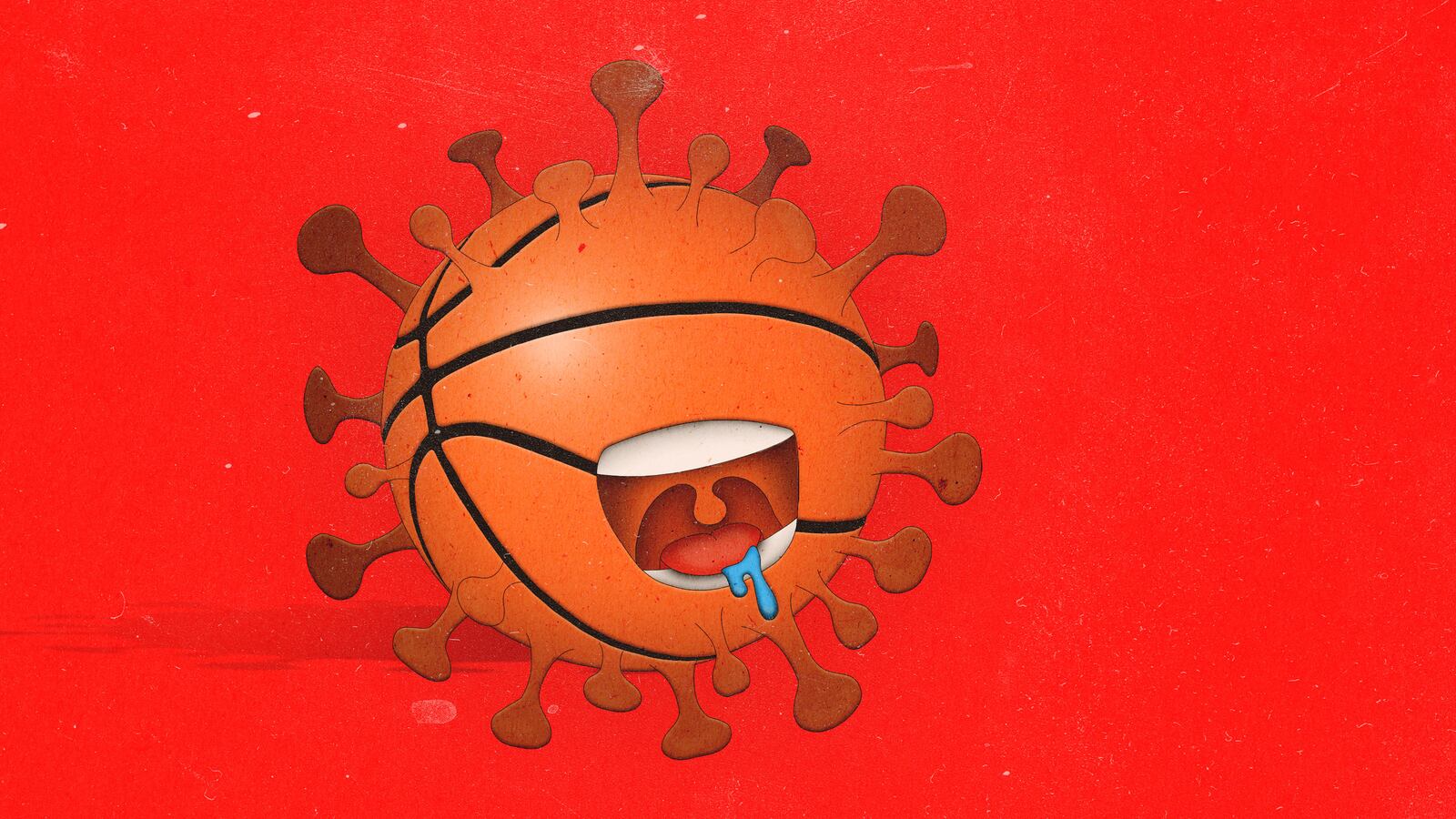While competing for playoff positioning and advocating for social justice, the basketball players at the NBA campus bubble outside Orlando, Florida, have also been conducting an admittedly exclusive science experiment that could help improve diagnostic testing in the United States.
The National Basketball Association, the National Basketball Players Association, and the Yale School of Public Health announced in June that they had partnered to study SalivaDirect, a saliva-based novel coronavirus testing method, using players, coaches, and staff members from the league’s (relatively) isolated Disney World stomping ground.
A non-peer-reviewed pre-print of a promising initial study was published last week on medrxiv after Yale’s research team selected and began testing from among the 22 teams who moved to Disney World, some of whom opted into the project. To be clear, players in the bubble are also regularly tested using another method that has been authorized for emergency use by the FDA, a designation the Yale test has not yet received. But the confluence of relative isolation and constant testing—as called for by the NBA restart plan—with a previously authorized diagnostic tool offered the chance to kick the tires on Yale’s new alternative.
Though players, reporters, league staffers, and hotel personnel have generally been reported to wear masks and practice social distancing, repeated testing using kits with quick turnarounds are widely understood to be a major component of preventing an outbreak. And so far, despite Florida’s hot zone status and signs of epidemiological chaos in pro baseball, the new test has shown promise—even if most Americans are still nowhere close to getting their hands on them.
SalivaDirect is intended to be a non-invasive alternative to nasopharyngeal swabbing and was developed with hopes of reducing test times, cost, training, and the risk to health-care workers administering them, Dr. Nathan Grubaugh, an assistant professor of epidemiology who led Yale’s research team on the project, has explained. The method was developed after an earlier study at Yale “found that saliva samples taken from just inside the mouth provided greater detection sensitivity and consistency throughout the course of an infection than the broadly recommended nasopharyngeal approach,” according to a statement from the university. (There has been evolving evidence on the differences in accuracy based on saliva vs. nasopharyngeal testing.)
Back in June, Grubaugh said the NBA was interested in finding less-invasive testing solutions for communities like their own, which will need repeat testing, but also that “there is a strong desire on their part to give back to the public and especially help low-income communities.”
That touches on an issue that has been repeatedly raised since the group moved into its bubble and forward with its repeat testing plan: Are NBA players being prioritized for test results over other Floridians? Members of the local community have—like millions of other Americans—reportedly waited far longer to receive their results back than the professional athletes who’ve settled into the NBA campus.
It also remained to be seen just how well the newest technology in play stood the test of time—or bigger trials.
Dr. Adrian Hyzler, the chief medical officer for Healix International, which provides medical information to organizations whose clients travel internationally, called the technology “a welcome addition to the arsenal of COVID-19 testing strategies”—that is, if it survives the gauntlet of peer review and FDA authorization.
“It should be noted,” said Hyzler, that the SalivaDirect technology has been under FDA evaluation since mid-July without much public progress.
“We are pleased to have been able to support the valuable work that the Yale School of Public Health is doing to increase the accessibility of testing through SalivaDirect,” the NBA said in a statement. “Working with the NBA Players Association to support research in the interest of public health is a league priority, and we’re encouraged that the contributions of our players, team and league staff are helping the larger fight against COVID-19 by advancing this new testing technology.”
Though Yale’s researchers were not available for in-depth comment, Grubaugh—who is leading the research team—told The Daily Beast that they submitted their EUA on July 14 and that “it should be approved soon.”
But, Hyzler said, “I would hang fire reading too much into this test,” noting that the hurdles and reasons for skepticism between a preprint and actual usefulness “in the real world” are significant.
Within recent weeks, researchers have published similarly optimistic findings about saliva-based tests developed by Columbia University and separately at University of Colorado Boulder. Those two tests have also not received emergency use authorization from the FDA yet, but claim they have developed “a rapid, portable, saliva-based COVID-19 test” that could have results in under an hour and be scaled up for mass use.
Like those tests, the preprint for the Yale test claims it would be less likely to be affected by backlogs and supply chain shortages that have so far hindered the predominant iteration of diagnostic tests.
Linda Garner, an information scientist at CAS, a division of the American Chemical Society, reviewed the preprint with her team, telling The Daily Beast on Monday that “the SalivaDirect test takes a well-established and very sensitive molecular genetic technology” but “adds some features that may make it more accessible to point-of-care” settings. (Point of care means relatively quick results at the same location the swab occurs rather than sending a sample out to a separate lab.)
“The main differences in the two tests are that they are utilizing different basic molecular genetic technologies,” said Garner, who noted the Columbia test “requires less equipment.”
But having so many different options to choose from, especially if they vary widely in effectiveness, argued Garner, “could present challenges for patients to know which tests are available in their areas, and which specific test would be best for their personal situation.”
David Larsen, an associate professor in the Department of Public Health at Syracuse University who specializes in global health and infectious disease epidemiology, said he was “cautiously optimistic” about the science underpinning Yale’s test.
“It’s more of a question of how well we can adapt this and adopt this cheaper platform,” said Larsen. “It’s all about delivering this to scale.”
“It goes back to operationalizing this,” said Larsen. “You can’t expect every county health department to sort through the myriad diagnostics that are available, find the best one, and then implement it. You really need better guidance from the federal level.”
“It’s an interesting idea,” added Dr. Irwin Redlener, founding director of the National Center for Disaster Preparedness and a senior research scholar at Columbia University’s Earth Institute. “But I have no idea if this will actually pan out in the end.”
“Once we start getting into seriously large-scale testing, like 10 or 20 million cases a week, even small errors will get magnified to reflect a lot of people,” said Redlener. “These need to be really good.”
Weeks ago, Redlener and a slew of other experts touted the prospects of the Columbia test. But on Monday, he felt that his colleagues were experiencing a fatigue over the deluge of promising treatments without knowing whether any of them will pan out.
“I hope it’s great,” said Redlener. “I hope it’s exactly what they promise it’s going to be.”






